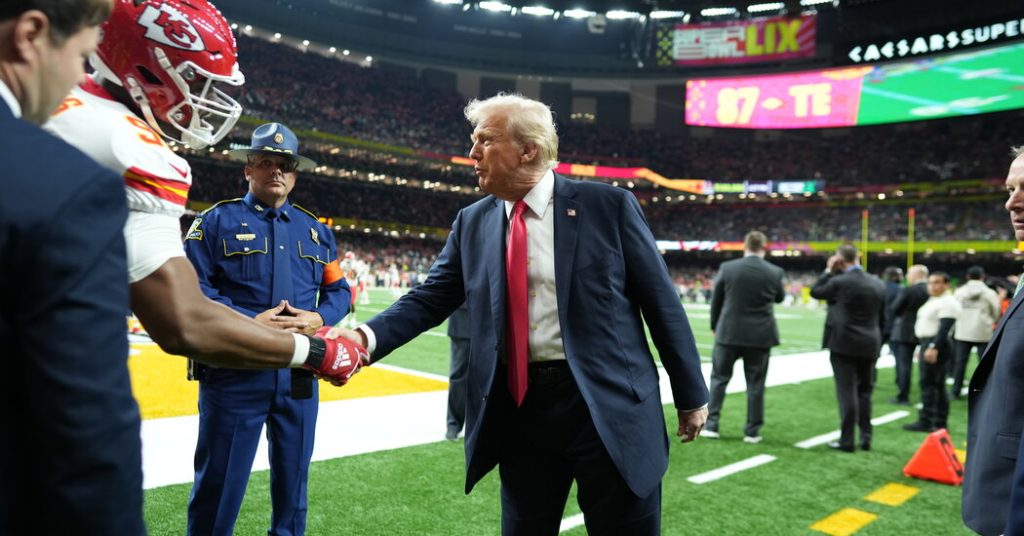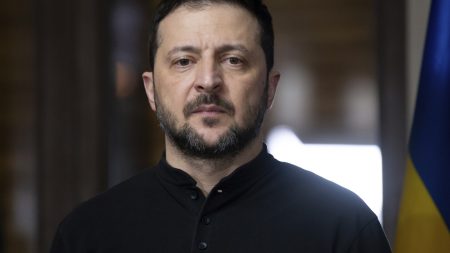A Wave of Legal Pushback Against Trump’s Executive Actions
In recent weeks, President Trump’s second term has been met with a flood of legal challenges as state attorneys general, unions, and nonprofits file over 40 lawsuits to counter his rapid-fire executive actions. These legal efforts aim to create a bulwark against what many see as a direct challenge to the Constitution and the system of checks and balances established by the Founding Fathers. Unlike the widespread public and political resistance that greeted the start of Trump’s first term in 2017, the opposition this time around is more subdued in the streets, Congress, and even within the Republican Party. Instead, the battle has shifted to the courts, where lawyers are stepping in to challenge the administration’s policies. As Skye Perryman, CEO of Democracy Forward, puts it, “The courts really are the front line” in this fight.
The Judiciary as the Front Line of Resistance
The legal pushback has already produced some quick, albeit potentially temporary, results. Judges in nine federal court cases have issued rulings that, for now, limit the administration’s ability to implement certain executive actions. These include ending automatic citizenship for children of undocumented immigrants born on U.S. soil, transferring transgender female inmates to male-only prisons, and freezing as much as $3 trillion in domestic spending. For example, Judge Carl Nichols, a Trump-appointed district judge, issued a temporary restraining order to halt the administrative leave of 2,200 employees at the U.S. Agency for International Development. Similarly, Judge John C. Coughenour in Seattle issued a nationwide injunction blocking Trump’s order to end universal birthright citizenship, emphasizing that such a change would require a constitutional amendment. “The Constitution is not something with which the government may play policy games,” he sternly warned.
Despite these early victories, the judiciary faces an uphill battle. The executive branch, by design, can act swiftly, while the courts are inherently slower. This mismatch raises concerns about whether the legal system can keep up with the pace of Trump’s disruption. As California Attorney General Rob Bonta admitted, balancing the demands of these high-stakes legal challenges with personal life is exhausting. “It’s hard work, but we’re not asking anyone to feel sorry for us,” he said. “This is what we signed up to do.”
A Broadside Against the Constitution’s Checks and Balances
President Trump’s first three weeks in office have been marked by a blitz of executive orders that upend long-standing policies on immigration, civil service, and social equity. These actions are being taken unilaterally, without consultation with Congress, and often in defiance of existing law. Legal experts argue that the administration is deliberately testing the boundaries of executive power, potentially overwhelming its opponents and setting the stage for precedent-shattering decisions from the conservative Supreme Court. Judith Resnik, a professor at Yale Law School, describes this strategy as “bare-knuckle,” designed to consume resources and public attention while challenging the existing legal order.
To Trump’s supporters, however, the president is simply exercising the powers granted to him by Article II of the Constitution. They argue that judges overstepping their authority are the ones violating the Constitution. Mike Davis of the Article III Project, a conservative advocacy group, insists that Trump is acting within his legal rights, and any judicial pushback is unfounded. “President Trump is not stealing other branches’ powers,” Davis said. “He is exercising his Article II powers under the Constitution. And judges who say he can’t? They’re legally wrong.”
A Dangerous Precedent: Vice President Vance’s Challenge to Judicial Authority
The stakes in this legal battle escalated further when Vice President JD Vance suggested on social media that judges may not have the final say on the legality of executive actions. Drawing an analogy to military operations and prosecutorial discretion, Vance implied that the judiciary could overstep its authority by interfering with legitimate executive powers. Legal experts warn that this line of reasoning opens the door to a constitutional crisis. Quinta Jurecic of the Brookings Institution cautions that if the executive branch refuses to comply with court orders, it could effectively nullify the rule of law. “At that point,” she said, “the Constitution falls apart.”
The Battle Over Funding and Compliance
Even as the legal battles rage on, there are signs that the administration is not fully complying with court orders. In Rhode Island, 22 state attorneys general filed an emergency motion accusing the administration of continuing to freeze federal funds despite a court order to stop. The White House claims that Trump’s electoral victory in November gives him a mandate to act decisively, even if it means bypassing Congress. Harrison Fields, a White House spokesman, dismissed the legal challenges as attempts to undermine the will of the American people. Yet, as the cases make their way through the courts, the ultimate question of whether Trump’s actions are legal remains unresolved.
The Wild Card: Elon Musk’s Role in the Trump Administration
One unexpected factor in this legal drama is the role of Elon Musk, the billionaire businessman who has been granted sweeping, potentially illegal powers to reshape the federal government. Musk’s involvement has caught even some Trump opponents off guard, with New Jersey Attorney General Matthew Platkin calling him “the one wild card” in the administration’s plans. “I’m not even sure Trump knows what he is doing,” Platkin said of Musk’s actions, which include slashing the federal workforce and restructuring agencies without Senate confirmation.
The Justice Department has defended Musk’s role, arguing that his associates are acting lawfully under the authority of acting cabinet members. However, judges have already begun to push back. In one notable case, Judge Paul Engelmayer in New York granted a request by 19 Democratic attorneys general to block Musk’s government efficiency team from accessing sensitive Treasury Department systems. The attorneys general argued that granting such access would violate the Constitution and harm states that rely on Treasury funding for critical programs, such as child support payments and debt recovery.
The Stakes: A Constitutional Crisis and the Future of Equal Justice
As the legal battles intensify, the stakes could hardly be higher. For many, this is a moment of constitutional crisis, with the very principles of equal justice under law hanging in the balance. “I think right now we’re in the midst of a constitutional crisis,” said New York Attorney General Letitia James, who has been at the forefront of the legal challenges. Meanwhile, legal scholars like Judith Resnik warn that the administration’s actions threaten the foundational idea of bounded executive power. “Unbounded power is the antithesis of the U.S. Constitution,” she said.
For now, the attorneys general and their allies are preparing for a long, grueling fight. With parallel efforts underway since early 2024 to anticipate and counter Trump’s second-term agenda, these legal warriors are braced for the challenges ahead. As Akhil Reed Amar of Yale Law School observed, the Constitution itself was designed to pit ambition against ambition, ensuring that no single branch of government could dominate the others. In this moment of high tension, that constitutional blueprint is being tested like never before.
The coming months will determine whether the judiciary can uphold the rule of law against an administration that seems determined to push the boundaries of executive power. For now, the courts remain the last line of defense against what many see as an existential threat to American democracy. As the words etched into the U.S. Supreme Court building remind us, the promise of “equal justice under law” is on trial.












